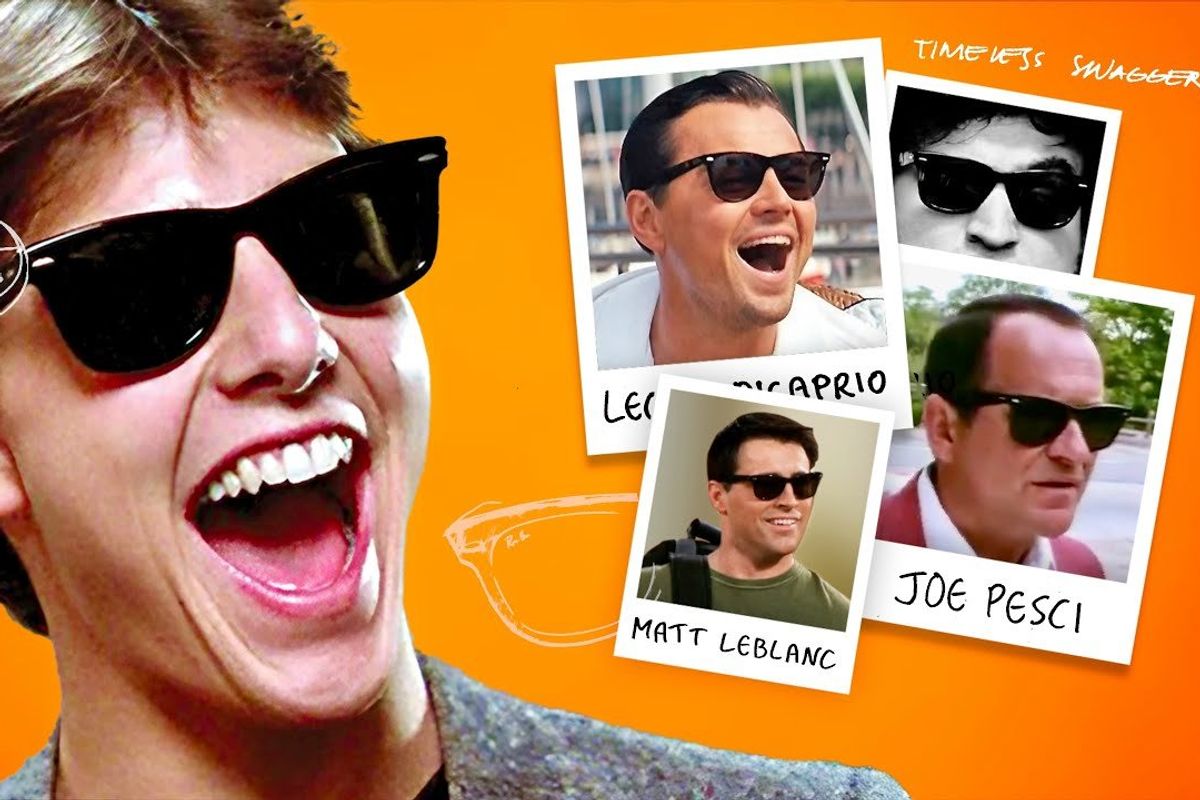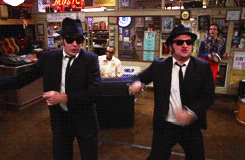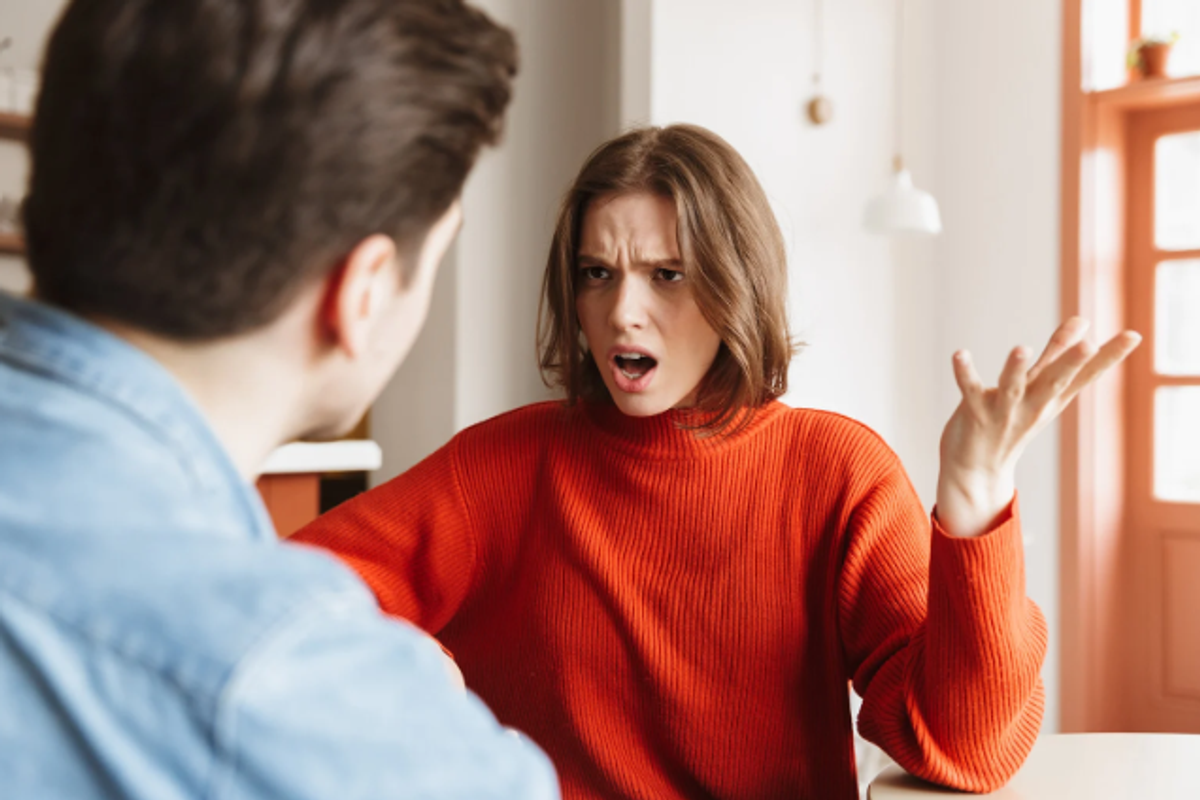Cool video shows why so many iconic movie characters wear Ray-Ban sunglasses
Ray-Ban was about to cancel the Wayfarer line, but then one movie changed everything.

Ray-Ban Wayfarer sunglasses throughout film history.
It’s hard to think of a more iconic sunglass design than the Ray-Ban Wayfarer. The shades are a staple of the American wardrobe and have a special place in cinema history, appearing in unforgettable films such as “The Blues Brothers,” “The Wolf of Wall Street” and “Risky Business.”
The sunglasses' classic design has made them a hit with the public, but their success on the silver screen is primarily due to some savvy business moves by Ray-Bans' parent company, Bausch and Lomb.
Toni’s Film Club, a channel dedicated to film history, shared the story of how Ray-Bans became so popular in films on YouTube.
- YouTubewww.youtube.com
When were Ray-Ban Wayfarer sunglasses invented?
Ray-Ban Wayfarer sunglasses were initially released in 1952. Their cutting-edge design is attributed to injection-molded plastic, whereas previously, sunglasses were made from wireframes. The sunglasses became a hit after James Dean wore them in 1955’s “Rebel Without a Cause” and became a staple amongst the counter-culture.
In the 1960s, Elvis Presley, The Beatles, and Bob Dylan wore Wayfarers, cementing their place in the hipster wardrobe for years to come. However, in the ‘70s, the Wayfarers began to lose their way with the public at-large.
“By the 1970s [Wayfarers] had fallen out of style in favor of the more subtle and elegant frames and the sales had decreased so much that Ray-Ban was planning to discontinue the model. But little did they know in the summer of 1980, things were about to change,” Toni says.
In 1980, Dan Aykroyd and John Belushi starred in the megahit comedy “The Blues Brothers” and wore black Wayfarers with their two-tone black-and-white outfits. The film would be a smash for the “Saturday Night Live” alumnus, and Wayfarers were back in style overnight.
Interestingly, the Blues Brothers were the antithesis of early ‘80s fashion. “Their sleek black suit and tie was a nod to earlier African American menswear and blues culture,” Bianca writes at Costume Rhapsody. “Artists like BB King, John Lee Hooker wore fedoras and suits. Many Blues artists wore impeccably tailored suits and fedoras to every gig. It was elegant Black culture, the blues, counterculture, and Chicago history.”
Why are Ray-Ban sunglasses so popular in movies?
After the success of “The Blues Brothers” in 1982, Ray-Ban signed a $50,000 deal with a company specializing in product placement. Over the following years, their sunglasses would be featured in over 60 movies and TV shows. Before “The Blues Brothers,” Ray-Ban sold 20,000 pairs of Wayfarers a year; by the time Tom Cruise donned the shades and danced in his underwear in 1983’s “Risky Business,” sales were up to 360,000 yearly.






 Millennial mom struggles to organize her son's room.Image via Canva/fotostorm
Millennial mom struggles to organize her son's room.Image via Canva/fotostorm Boomer grandparents have a video call with grandkids.Image via Canva/Tima Miroshnichenko
Boomer grandparents have a video call with grandkids.Image via Canva/Tima Miroshnichenko

 Worried mother and children during the Great Depression era. Photo by Dorthea Lange via Library of Congress
Worried mother and children during the Great Depression era. Photo by Dorthea Lange via Library of Congress  A mother reflects with her children during the Great Depression. Photo by Dorthea Lange via Library of Congress
A mother reflects with her children during the Great Depression. Photo by Dorthea Lange via Library of Congress  Families on the move suffered enormous hardships during The Great Depression.Photo by Dorthea Lange via Library of Congress
Families on the move suffered enormous hardships during The Great Depression.Photo by Dorthea Lange via Library of Congress
 Wallace And Gromit Cheese GIF
Wallace And Gromit Cheese GIF 
 Two woman having a heart-to-heart conversation. via
Two woman having a heart-to-heart conversation. via  A man who has dug in his heels. via
A man who has dug in his heels. via